24 Nights / 25 Days
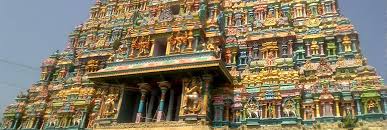
Meeting and assistance on arrival by our representative. Traditional welcome with garlanding and transfer to hotel. Delhi, the capital of the country, and one of India’s fastest growing cities, has spread far beyond the “seven cities”, created between the 13th and the 17th centuries. It has sprawled over the west bank of the river Yamuna, straddling the river. Remnants of the glorious past survive cheek-by-jowl with soaring skyscrapers, posh residential colonies and bustling commercial complexes. Delhi has some of the finest museums in the country. Its boutiques and shopping arcades offer access to a wealth of traditional and contemporary crafts, from all over the country.
Overnight at Hotel
After, breakfast at the hotel proceed to Agra.
Agra, Agra is globally renown as the city of the Taj Mahal. But this royal Mughal city has, in addition to the legendary Taj, many monuments that epitomise the high point of Mughal architecture. In the Mughal period, in the 16th and 17th centuries, Agra was the capital of India. It was here that the founder of the dynasty, Babar, laid out the first formal Persian garden on the banks of the river Yamuna. Here, Akbar, his grandson raised the towering ramparts of the great Red Fort. Within its walls, Jehangir built rose-red palaces, courts and gardens, and Shahajahan embellished it with marble mosques, palaces and pavilions of gem-inlaid white marble.
Overnight at Hotel
After breakfast proceed for half day city tour visiting the world famous Taj Mahal ad Agra Fort – Taj Mahal – One of the most photographed tourist attractions in the world, Taj Mahal is the attraction that pulls the tourists from all over the world. The Taj Mahal is entirely made of white marble and its walls are decorated with exquisite pietra dura (stone inlay) work. It is said that different types of precious and semi-precious stones were used in the intricate inlay work done on the interiors. This magnificent monument is set around a Charbagh or ‘four garden’ plan, which is split by watercourses-a reflection of the Persian style. ( Taj Mahal remains Closed on Friday).
After Lunch visit Agra Fort – Built by Emperor Akbar on the west bank of the river Yamuna and beautified with palaces and gardens by Jehangir, Agra Fort today dominates the center of the city. The crescent-shaped fort with its 20-metre high, 2.4-km outer walls contains a maze of buildings that form a small city within a city. One can enter the fort only through the Amar Singh Gate. The public access is limited to the southern part of the fort, which includes nearly all the buildings of tourist interest. The Diwan-i-Aam (hall of public audience) and Diwan-i-Khas (hall of private audience) were built by Shahjahan for receiving audiences.
Jehangir’s palace built by Akbar was the largest private residence in the fort. Close to Diwan-i-Khas, stands an octagonal tower known as Musamman Burj. It was here that Shahjahan breathed his last after seven years of imprisonment. Other places to see within the fort include the Khas Mahal, Sheesh Mahal (the mirror palace) and the Anguri Bagh (the Grape Garden).
Overnight at Hotel
After breakfast depart by surface for Jaipur enroute visiting Fatehpur Sikri. Fatehpur Sikri Thirty-nine kilometres from Agra stands Fatehpur Sikri, the red sandstone city of yesteryears. The city was built by the Mughal Emperor Akbar in AD 1564 in honour of the Muslim saint Sheikh Salim Chisthi. Fatehpur Sikri was intended to be the capital city but the shortage of water and unrest in the north-west made Akbar abandon it after 14 years . One of the major attractions of this city is the marble tomb of Sheikh Salim Chisthi. Other places of interest include Diwan-i-Aam, Diwan-i-Khas, Buland Darwaza, Panch Mahal, Jodha Bai’s Palace and Birbal Bhavan. On arrival in Jaipur check-in at hotel.
Jaipur, popularly known as the Pink City, is the capital of the state of Rajasthan, named after Jai Singh, the former Maharaja of Jaipur. It has, long been established, on tourist itineraries as the third corner of India’s Golden Triangle, just 300 kilometres southwest of Delhi, and 200 kilometres west of Agra. The old city of Jaipur is partially encircled with seven gates – the major gates are Chandpol, Sanganeri, and Ajmeri.
In the evening, visit Chokhi Dhani – An ethnic village resort, the vitality of Rajasthani folk culture comes alive as children dance rhythmically to the loud tenor of folk songs sung by men and women, festooned in bright clothes. Gaily caparisoned camel, horses and bullock carts offer joy rides. A traditional Rajasthani dinner will be served.
Overnight at Hotel
After breakfast excursion to Amer Fort – At a short distance of 11 kms. from Jaipur, the Amer Fort complex stands amidst wooded hills overlooking the Delhi-Jaipur highway, with its forbidding ramparts reflected in the still waters of the Maota Lake below. One of the finest examples of Rajput architecture, it was the ancient capital of the Kachhawah rulers. The original palace was built by Raja Man Singh and additions were made later by Sawai Jai Singh.
Within the palace are the Diwan-e-Aam or the “Hall of Public Audience”, the Diwan-e-Khas or the “Hall of Private Audience” and the Sukh Niwas where a cool breeze blows across channels of water for the purpose of air-conditioning. Here are the private chambers of the queens with windows having latticed screens so that the ladies could watch the proceedings of the royal court in privacy. There is also the Jai Mandir or the “Temple of Vicotry”, with its famed Sheesh Mahal, the scintillating “Hall of Mirrors”.
Afternoon sightseeing tour of Jaipur city visiting City Palace and Jantar Mantar (Observatory).
The City Palace is now converted into a museum, except a small portion that is still used by the royal family of Jaipur. Built in the fortified campus style, the palace covers almost one-seventh part of the city. One of the major attractions in the museum is the portion that is devoted to the arms and ammunition used by the royal family in the past. Other important attractions are the Textile and Costume Museum, Art Gallery, Chandra Mahal, Mubarak Mahal, and Diwan-i-Khas and Diwan-i-Am.
Drive past Hawa Mahal – Strange though it may seem, this most famous landmark of Jaipur is not actually a palace but a series of sandstone screens. This pink structure was constructed so that the ladies of the palace could watch the royal processions without being seen by any outsider. This sandstone edifice was named Palace of Winds after the many brass wind vanes that adorned it until 1960s. Later visit the unique Jantar Mantar Observatory – situated in the heart of the city where time has been accurately measured since the 17th century. Overnight at the hotel.
Overnight at Hotel
After breakfast depart by surface for Bikaner enroute visiting Mandawa.
In the heart of the Shekhawati region of Rajasthan, 190 km off Jaipur, lies the beautiful small town Mandawa, known throughout the state for its forts and havelis. Mandawa – often called the ‘open air art gallery of Rajasthan’, the region is famous for the high quality frescoes. Mandawa provides the visitors with a sense of discovery at every turn; battlements that offer spectacular views of the town below, a whimsical peacock weather van, and an arched window that overlooks the verdant garden visited by peacocks. Most importantly, the fact that no two rooms are alike in the palace here. In the zenana or women’s quarters, one room offers antique murals, another has a marble fountain, and the turret room boasts of walls that are seven feet thick. Looking out from the window of the turret room, it is easy to imagine the marauding bandits that once roamed freely here. Little wonder then that the family crest contains the motto, ‘Veer Bhogya Vasundhara’, which translates into ‘the brave shall inherit the earth. Founded in the 18th century, the medieval fort of Mandawa dominates the town with a painted arched gateway adorned with Lord Krishna and his cows. The Chokhani and Ladia havelis and the street with Saraf havelis are some of the splendid examples of this region’s havelis. The Binsidhar Newatia Haveli has some curious paintings on its outer eastern wall-a boy using a telephone, and a European woman in a car driven by a chauffeur. The Gulab Rai Ladia Haveli has some defaced erotic images.
On arrival in Bikaner check-in at the hotel. Bikaner, the northern most point on the triangle of desert cities, was founded in 1488 AD. by Rao Bikaji, a descendant of the founder of Jodhpur, Rao Jodha. Like Jaisalmer, in the south, it was, once, an important trade centre. The old city is bolstered, by 7 km long imposing walls, with 5 entrance gates, built in the 18th century.
Overnight at Hotel
After breakfast proceed fo half day city tour.
Bikaner offers several attractions to the tourists besides, of course, the exotic camel safaris. Some of the major attractions around the city are Junagarh Fort, sumptuously decorated with its ornately lacquered walls in red & gold and panels of dazzling coloured glass inlay set over the coronation throne, it has several Palaces. Among them are Karan Mahal, Anup Mahal, Badal Mahal are prominent. Lalgarh Palace is carved out of red sand stone, and of late has been converted into a Heritage Hotel. You can visit the majestic forts or go to the Mata Karni temple where rats are considered sacred and worshipped. The camel festival held in the month of January is also an event worth witnessing.Camel Breeding Farm, Gajner Palace, Deshnoke Temple and Ganga Golden Jubilee Museum.
Afternoon depart by surface for Jaisalmer on arrival check-in at hotel. Jaisalmer, One of Rajasthan’s most alluring cities, Jaisalmer, deep in the heart of Thar Desert, abounds in ancient palaces, temples and quaint settlements. As the sun sets, the sandstone buildings emit a lustrous glow, that make Jaisalmer the “Golden City”. Founded by Rawal Jaisal in 1156 A.D., the remote location of Jaisalmer, kept it almost untouched by outside influences, even during the days of the British Raj.
Overnight at Hotel
After breakfast a full day sightseeing tour to visit this city of giled magic. See the Citadel, the fort built by Rawal Jaisal and where a fourth of the population lives;Jaisalmer fort is the main attraction of this picturesque desert city of Rajasthan. Located on the top of the Trikuta Hill, it is visible from a distance of about 15 kilometres. The ramparts, bastions and the long-stretching walls of the fort dazzle gloriously during early morning and at sunset Jain Temple This group of fine jain temples were built in the 12th to 15th century within the Jaisalmer fort. They are beautiful carved and dedicated to Rikhabdevji and Sambhavnathji. there is also a Shiva and Ganesh Temple inside the fort. Gyan Bhandar or Library : Some of the oldest manuscripts of India are found in this library established as a part of Jain temples. Patwon ki Haveli The life within the citadel gives you a clear picture of the medieval majesty with its magnificent palace, havelis, temples and the skilled artisans and camels all around. Among the havelis made by Jaisalmer/’s wealthy merchants include the Patwon ki Haveli, Salim Singh ki Haveli and Nathmal ki Haveli. The Patwon ki haveli is the grandest mansion in Jaisalmer, having ceiling supported by exquisitely carved pillars. The delicately chiselled balconies and extensive corridors and chambers of this haveli also present an impressive sight.
Half day excursion to Sand Sunes of the Thar desert near Jaisalmer on camel’s back.
Overnight at Hotel.
After breakfast drive to Jodhpur and check-in at the hotel. Jodhpur, Nestling within the depths of the Thar Desert, is the stronghold of the Rathore clan – Jodhpur, once the capital of the former princely state of Marwar, the second largest city of Rajasthan, after Jaipur . The town was once known as Marwar, which means ‘Land of Death’, probably, referring to the harsh desert climate. It is an island of marble palaces, cordoned off from the desert by an immense wall, with eight gates facing different directions Rest of the day at leisure.
Overnight at Hotel
After breakfast half day sightseeing tour visiting the Mehrangarh Fort, situated on a low sandstone Hill, including Moti-Mahal and Phool Mahal. This fort is one of the largest fort in India. the fort is situated at an altitude of about 125 metres and is spread over an area of 5 sq km, with seven gates. It has been a witness to the splendor of bygone era. The beauty and the grandeur of numerous places in the fort narrate a saga of hard sandstones yielding to the chisels of skilled Jodhpur sculptures. Mehrangarh literally means “Majestic Fort”.
After lunch visit Jaswant Thada which is a white marble memorial built in memory of Maharaja Jaswant II in 1899 A story goes that Maharaja Jaswant succumbed to injuries in this place while fighting the Mughal king Jahangir.
Umaid Bhawan Palace – This immense palace known as Chittar Palace because of the local chittar sandstone used. the only palace built in 20th century under the famine .It was built in a time of peace and is quite western in its design. It was built as a famine relief project which employment to people for 16 years. It has its own theatre, eight dining rooms, and a banquet hall which seats three hundred people. A Ball Room had been built, catering to the Westernized royal lifestyle. Much of the interior of the palace is in the art deco style. In fact, it is said to be one of the finest surviving examples of art deco in the world. Deep within the palace is an indoor swimming pool, with a mosaic of zodiac symbols. The palace now runs as a hotel, though, a part of it has been retained as a museum and part as royal residence.
Government Musuem – This museum has a rich collection of weapons, textiles, miniature portraits, sculptures, antique weapons, local crafts and images of Jain Tirthankars. It is situated in the middle of the Umaid public gardens.
Later excursion to Mandore –Toward the north of Jodhpur is Mandore, the ancient capital of Marwar of Pratihara Rajputs (8 kms from Jodhpur) was abandoned for strategic reasons. The main attractions of the place are the Hall of Heroes which has sixteen huge figures which have been carved out of a single rock, the shrine of 330 million Gods and the royal cenotaphs. The extensive gardens at Mandore contain the beautiful chatris (cenotaphs) of Rathore rulers like Maharaja Dhiraj Aji.
After breakfast drive to Udaipur enroute visiting the Ranakpur Jain Temple which was built during the reign of the liberal and gifted Rajput monarch Rana Kumbha in the 15th century. The total number of columns is 1,444 all of which are intricately carved with no two being alike.The main temple is a Chaumukh or a four-faced temple dedicated to Adinath. The three other Jain temples in the same complex, including a temple of the Sun God, are all well worth a visit. One kilometer away from the temple complex is the temple of Amba Mata.
On arrival in Udaipur check-in at the hotel. Udaipur, There is no place in India which appeals more to the imagination of poets and painters, travellers and writers, than Udaipur, the lovely lake side capital of Mewar. The city’s inherent romance and beauty, and its remarkable past, bristling with episodes of heroism and splendour, continue to enthrall the visitor. Udaipur, the City of Dawn, looms up like a vision in white.Surrounded by hills and mountains, and set on the edge of three lakes, which give on to a fertile plain, it is bewitching in all its details – narrow streets lined by vivid coloured stalls, gardens, temples and palaces – every feature mirrored in the placid blue waters of lake Pichhola.
Overnight at hotel
After breakfast day visit to the celebrated temple of Eklingji which was built for the tutelary deity of the Maharanas of Mewar, of sand stone and marble in 734 A.D. Its 108 temples are enclosed by high walls and has a pyramidical roof composed of hundreds of knobs. Later, visit Nagda, one of the ancient palaces of Mewar dating back to 6th century A.D. The Sas Bahu Temples are among the most exquisitely carved temples.
Evening boat cruise on Pichola Lake 4 km long and 3 km broad., surrounded by splendid hills palaces, temples bathing ghats and embankments. Visit the island palace Jag Niwas which is beautifully set in the Lake
After breakfast proceed for half day sightseeing of Udaipur visiting the City Palace, Completely white and majestic, the City Palace stands on a hill surrounded by crenellated walls. Its main entrance is through the triple arched gate, the Tripolia, built in 1725. The Suraj Gokhada, the Balcony of the Sun, where the Suryavanshi Maharanas of Mewar, presented themselves in times of trouble to the people to restore their confidence, is another fascinating monument Jagdish Temple, Built in 1651 A.D., by Maharaja Jagat Singh I, it is the largest and most splendid temple in Udaipur. Drive around Fateh Sagar is a beautiful lake, overlooked by a number of hills on the three sides and the Pratap Memorial on the north was built by Maharana Fateh Singh. In the middle of the lake is Nehru Park-a lovely garden island with a boat shaped café accessible by an enjoyable boat ride. Saheliyon-ki-Bari (Queen resort for her friends) is a small ornamental garden was a popular relaxing spot where royal ladies came for a stroll and hence the name. The garden has many fountains in its four delightful pools, chiseled kiosks and marble elephants. Bharatiya Lok Kala Musuem has interesting collection exhibited by this Indian folk arts museum includes folk dresses, ornaments, puppets, masks, dolls, folk musical instruments, folk deities and paintings and the high point of the exhibits puppets.
Overnight at Hotel.
After breakfast transfer to airport to connect flight for Delhi. Meeting and assistance on arrival and transfer to the hotel. Afternoon proceed to visit museums.
Nehru Memorial Museum – This colonial mansion, also known as Teen Murti Bhavan, was originally built for the commander of the British Indian Army. While the Viceregal residence (at the other end of South Avenue) became the home of India’s president, India’s first prime minister, Jawaharlal Nehru, took up residence here. On your way out, stop and see the 14th-century hunting lodge next to the Nehru Planetarium.
National Museum- A comprehensive collection of antique crafts, stone carvings and artifacts. Some of them dating back to the period of Harappa & Mohanjodaro. The museum shows what ancient India was all about.
In the evening witness classical dance show followed by Dinner at Chore Bizzare.
After breakfast proceed for sightseeing tour of Old and New Delhi visiting Raj Ghat- the cremation sites of Mahatma Gandhi, Drive past the Jama Masjid , one of the largest mosques of India, also Red Fort, Enjoy rickshaw ride in the local markets of Chandni Chowk, Qutab Minar – gracefully hand-carved for its entire height of 234 ft. , India Gate (memorial to the Indian army soldiers who died in World War) drive past Rashtrapati Bhawan (formerly the viceroy’s residence) and Parliament house and Government buildings.
Overnight in a hotel
After breakfast transfer to airport to board flight for Cochin. Meeting and assistance on arrival and transfer to hotel. The commercial capital and most cosmopolitan city of Kerala is Cochin (Kochi), is also known as Queen of Arabian Sea. It is one of the finest natural harbours of the world, this was once a major center of commerce and trade with British, Arabs, Chinese, Portuguees, Dutch etc. Evening boat cruises at the back water and later enjoy Kathakali performance at the cultural centre.
Overnight in a hotel
After breakfast proceed for half day city tour visiting Mattancherry Palace also known as Dutch Palace, built the Portuguese and presented to the Raja of Kochi in 1555 AD. It acquired the present name after 1663 when the Dutch carried out extensions and repairs in the palace. AT no time did the Portuguese or Dutch stay here. Its interiors are decorated with murals from the Ramayana and there are some lively displays of royal costumes and palanquins. Jewish Synagogue was built in 1568 AD. The Great Scrolls of the Old Testment, the copper plates in which the grants of privilege made by the Cochin rulers were recorded and the exquisite Chinese hand-painted tiles are of interest. ST. Francis Church: is at Fort Kochi The Protestant church was originally built by the Portuguese in 1510 AD and is believed to be the oldest church built by the Europeans in India. It is here the remains of the inveterate traveller, Vasco da Gamma were initially buried and 14 years later, his mortal remains were taken to Portugal.
Chinese Fishing Nets: Fort Kochi The Chinese Fishing net that line the sea-front and exhibit a mechanical method of catching fish by local fishermen in Fort Kochi. Said to have been brought from China by traders of Kubalai Khan’s Court, they are used at high tide.
Overnight in a hotel
After breakfast drive to Munnar and check-in at the hotel Munnar – Situated at the confluence of three mountain streams – Mudra Puzha, Nalla Thanni & Kundala, this hill station was the summer resort of British Government in South India. Sprawing tea plantations, picture-book towns, winding lanes and holiday facility make this popular hill station. Munnar has also has the highest peak of South India Anamudi which towers over 2695 mtrs. It is ideal spot for trekking.
In the evening explore the tea gardens spread like a green carpet over hundreds of kilometers, lust green hills, a place so difficult to describe, very low population too far from pollution, most of the covered by Tata tea. Overnight at Hotel
Overnight in a hotel
After breakfast proceed for sightseeing of Munnar visiting Rajamalai, a top peak of Munnar where you will Neel Thar (Mountain Goats) Matuppetty dam, Indo Swiss project (subject to permission from the authorities). Rest of the day free to explore the city of Munnar.
Overnight in a hotel
After breakfast drive to Periyar and check-in at the hotel. Periyar is South India’s most popular wildlife sanctuary spread across 777sq.km. in the picturesque rainforests of the Western Ghats. Evening boat ride on Lake Periyar to watch animals in their natural habitat. The earliest sanctuary, it was set up in 1934 and forms part of the mountain ranges, the Western Ghats. Cruising on Lake Periyar, you are likely to see animals like wild boars, sambars, wild dogs, langur monkeys and wild elephants
Overnight in a hotel
After breakfast proceed for spice plantation visit. Periyar is the center of spice plantations such as Cardamom, Cloves & Pepper apart from Coffee and Tea. Periyar with cool climate, spice-perfumed air and endless trekking options is truly an exhilarating experience. Later relax in the Hotel or Ayurvedic Massages.
Overnight in a hotel
After breakfast drive to Kumarakom and check-in at the hotel. Kumarakom is the loveliest village in Kerala blessed with natures rare gifts is on the eastern side of vast Vembanad Lake. Kumarakom provides boating, fishing and sightseeing experiences that are too exhilarating. An exclusive attraction of this much sought after backwater resort is Kumarakom bird sanctuary. Rest of the day at leisure at Kumarakom.
Overnight in a hotel
Breakfast at the hotel. Afternoon board house boat for Alleppey. The houseboats are giant country Crafts, measuring upto 80 feet length. It took great skill and meticulousness to construct these giants by tying huge planks of jack wood together, without the use of a single nail. Today these are the most exciting tourism product in India, which usually has one bed room, an open lounge, deck, kitchenette and a crew comprising oarsmen, a cook and guide. You will be cruising through backwater of Kerala. Your crew will prepare you delicious food onboard.
Overnight in a Houseboat
After breakfast Disembark at Alleppey and drive to Kovalam. On arrival check-in at the hotel. Kovalam (16 Kms from Trivandrum city) this international beach has been the favourite haunt of tourist since 1930’s. Kovalam consists of three adjacent crescent beaches, the southernmost, known as lighthouse beach is the most popular. This most renowned beach destination is much sought after for sunbathing, water sports, shopping, catamaran cruising, yoga, meditation and rejuvenative Ayurvedic body toning massages. Later have rejuvenating Ayurvedic message at the hotel. Evening enjoy beach sight.
Overnight in a hotel in Kathmandu
Breakfast at the hotel. Full day free for Ayurvedic Massages. Evening transfer to airport to connect flight for onward destination.
End Of Our Services
We Deal in Tour and Travels Services. Read More...
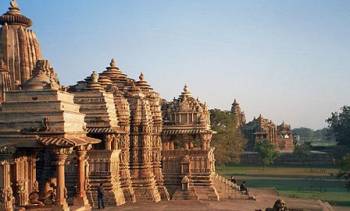 7D/6N
7D/6N
South India Temple Tour Package
Chennai - Periyar - Trivandrum - Bangalore - Mysore - Madurai
 13D/12N
13D/12N
South India Spice Tour Package
Kovalam - Thekkady - Munnar - Ooty - Trivandrum - Alleppey
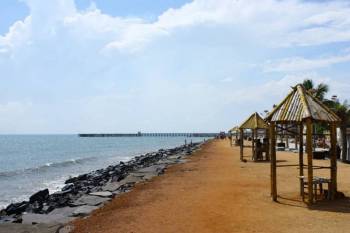 11D/10N
11D/10N
South India Beach Tour Package
Mamallapuram - Chennai - Kodaikanal - Thekkady - Kottayam - Trivandrum - Kovalam - ..
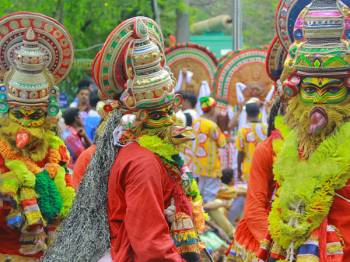 7D/6N
7D/6N
South India Festivals Tour Package
Chennai - Madurai - Periyar - Trivandrum - Bangalore
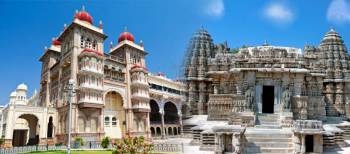 6D/5N
6D/5N
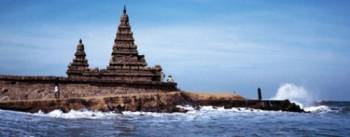 13D/12N
13D/12N
Chennai - Mahabalipuram - Pondicherry - Trichy - Madurai - Kodaikanal - Periyar - A..
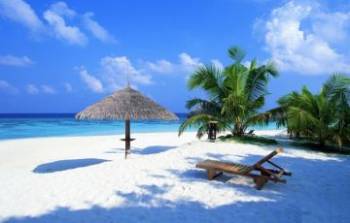 17D/16N
17D/16N
South India with Goa Beaches Package
Mumbai - Hyderabad - Chennai - Mysore - Bangalore - Bijapur
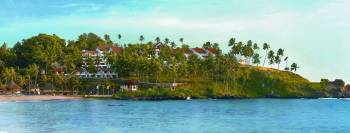 18D/17N
18D/17N
South India & Kerala Tour Package
Bangalore - Mysore - Ooty - Periyar - Madurai - Rameshwaram - Trichy
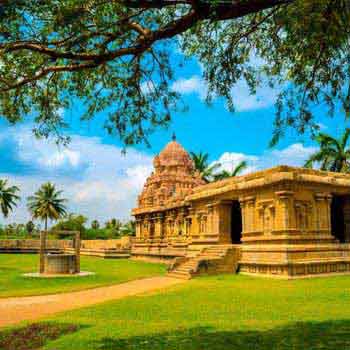 21D/20N
21D/20N
Best of South India Tour Package
Chennai - Mahabalipuram - Kanchipuram - Pondicherry - Ooty - Mysore - Hassan - Coon..
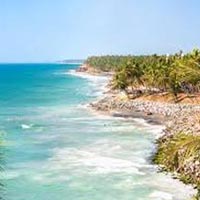 25D/24N
25D/24N
Chennai - Mahabalipuram - Thanjavur - Kumbakonam - Tiruchirappalli - Madurai - Rame..
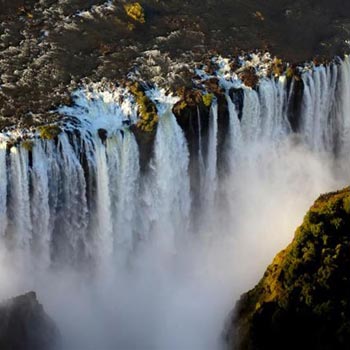 25D/24N
25D/24N
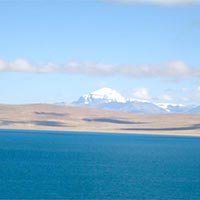 25D/24N
25D/24N
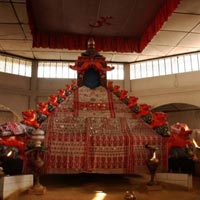 25D/24N
25D/24N
 25D/24N
25D/24N
Mumbai - Nashik - Varanasi - Bijapur - Badami - Hampi - Hassan - Mysore - Mettupala..
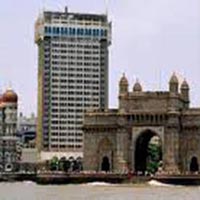 25D/24N
25D/24N
Mumbai - Nashik - Varanasi - Bijapur - Badami - Hampi - Hassan - Mysore - Mettupala..
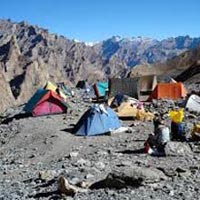 25D/24N
25D/24N
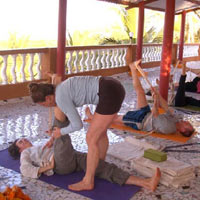 25D/24N
25D/24N
Rejuvenation and Meditation Tour
Chennai - Mahabalipuram - Thanjavur - Trichy - Madurai - Rameshwaram - Kovalam
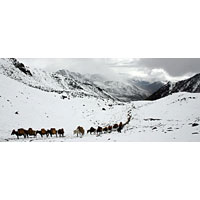 25D/24N
25D/24N
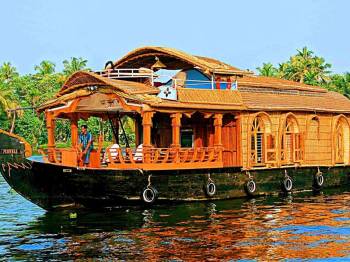 5D/4N
5D/4N
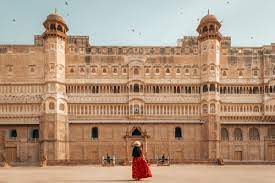 13D/12N
13D/12N
Rajasthan Tour Package 12 Night - 13 Days
Ajmer - Bikaner - Jaipur - Jaisalmer - Jodhpur - Mount Abu - Pushkar - Udaipur
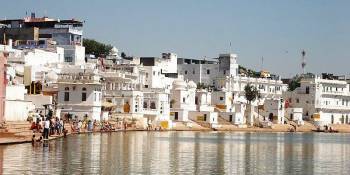 13D/12N
13D/12N
12 Nights Rajasthan Package From Jaipur
Ajmer - Bikaner - Jaipur - Jaisalmer - Jodhpur - Mount Abu - Pushkar - Udaipur
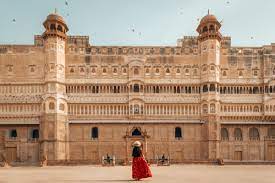 13D/12N
13D/12N
Rajasthan Tour Package 12 Night - 13 Days
Ajmer - Bikaner - Jaipur - Jaisalmer - Jodhpur - Mount Abu - Pushkar - Udaipur
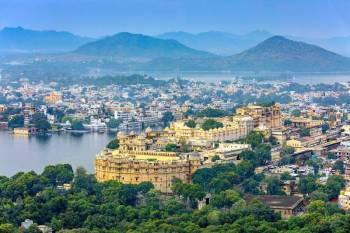 12D/11N
12D/11N
11 Nights 12 Days - Delhi Agra Rajasthan
New Delhi - Mathura - Agra - Jaipur - Ajmer - Pushkar - Udaipur - Mount Abu - Ranak..
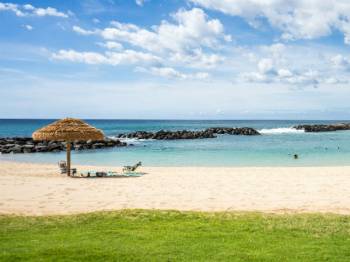 11D/10N
11D/10N
Kerala Tour Package 10 Nights - 11 Days
Kochi - Kovalam - Thekkady - Thiruvananthapuram - Alleppey - Kanyakumari - Munnar
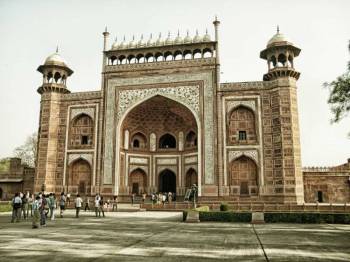 11D/10N
11D/10N
10 Nights Uttar Pradesh Tour Package Fro..
New Delhi - Agra - Prayagraj - Lucknow - Mathura - Varanasi - Ayodhya - Vrindavan -..
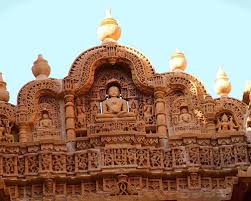 10D/9N
10D/9N
9 Night - 10 Days Rajasthan Tour Package
Ajmer - Jaipur - Jaisalmer - Jodhpur - Mount Abu - Udaipur
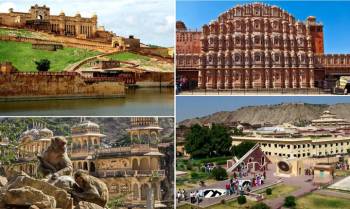 10D/9N
10D/9N
Ajmer - Udaipur - Mount Abu - Jodhpur - ..
Ajmer - Jaisalmer - Jodhpur - Mount Abu - Udaipur - Jaipur